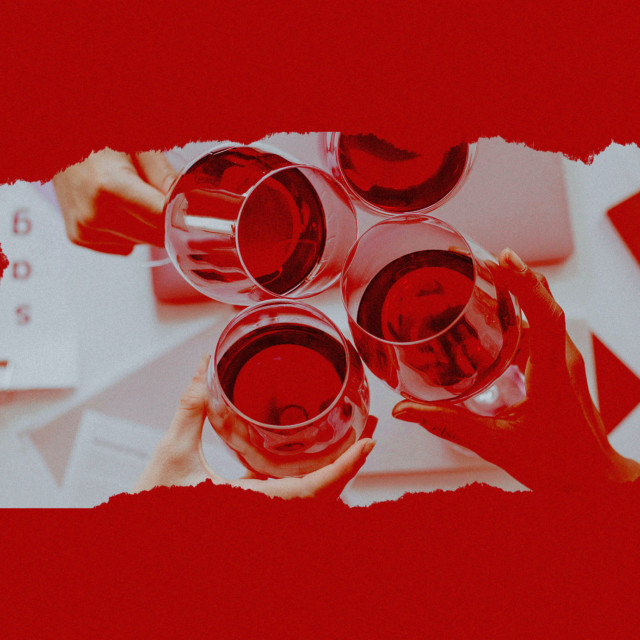Remember all those rules you had to learn and memorize in school, only to later discover that you had to learn the exceptions as well?
For example, that all months have either 30 or 31 days, except for February, which has only 28 days — and even that exception has an exception in leap years. Or that “i” always follows “e” — except after “c.”
The bad news for students of wine is that the subject is no different: For every seemingly hard-and-fast rule we know about wine, there always seems to be an exception.
All white Burgundies are made with Chardonnay.
Except in Bouzeron, just five miles away from one of the world’s greatest Chardonnay vineyards, Chassagne-Montrachet, and on the same limestone strata as its famous Côte de Beaune neighbor. In Bouzeron, Aligoté is the grape of choice, and it grows so well there that it has its own appellation. One of the most famous Bouzeron producers is Domaine A. & P. de Villaine, which also makes wine at Domaine de la Romanée-Conti, one of the world’s highest-rated red wines.
No chemical pesticides are used in growing organic grapes.
Except for those made with “natural” chemicals, including copper and sulfur compounds, and even a few “synthetic” ones as well. Often, well-meaning winegrowers will incorrectly say, “We use no chemicals,” meaning no synthetic chemicals. The idea is that naturally occurring chemicals are safer for humans and the environment when used to kill insects and fungi than ones produced artificially by man — and in some but not all instances, that is relatively true. Of course, organic farming is generally safer than using lots of synthetic chemicals, but take those claims of using “no chemicals” with a grain of naturally occurring salt.
The Champagne region only makes bubbly wines.
Except for a red table wine called Côteaux Champenois, a still wine made from the same Pinot Noir grapes used for Champagne, but without the bubbles. It tastes very much like a red Burgundy, it’s relatively rare, and the expressions are not cheap. Bollinger’s La Côte aux Enfants, a single-vineyard wine, goes for about $120 a bottle. Only a few hundred of them are made, and then not in every vintage.
The Sauternes region of Bordeaux makes only sweet wines.
Except when they call it Bordeaux Blanc and produce a crisp, flavorful table wine out of the same grapes — chiefly Sauvignon Blanc and Sémillon. Normally, grapes in the region are allowed to be attacked in misty fall mornings by a fungus called botrytis, which drains water from the grapes and concentrates sugar to make delicious sweet wine. Want a crisp, dry wine from Sauternes? Pick it early, and call it something else.
Grape juice is always white, even if it comes from red grapes.
Except when it’s a teinturier. Almost all red wines — Merlot, Pinot Noir, the Cabernets — get their darker color from the pigments in the grape skins and not the juice. That’s why Champagne producers who want to make a “Blanc de Blancs” from Pinot Noir and Pinot Meunier rush to separate the juice from the skins. The same goes for rosés that allow a little skin contact for a dab of color. But a grape category called teinturiers, which includes varieties like Alicante Bouschet, has red juice as well. In past years, these grapes were often blended to give darker colors to wine made from more anemic varieties.
You can tell the exact amount of alcohol in your wine by reading the label.
Except, you can’t always tell. The TTB, the federal agency that regulates wine labels, says, “Alcohol content may be stated as a specific percentage with a tolerance of plus or minus 1 percentage point for wines containing over 14 percent alcohol by volume [and] plus or minus 1.5 percentage points for wines containing 14 percent or less alcohol by volume.” Alternatively, alcohol content may be stated as a narrow range, such as 9-12 percent alcohol by volume. That’s partially because smaller wineries may not have access to precise content testing — plus, TTB bases taxes on alcohol within these ranges.
A ‘varietal’ is a wine made from one grape variety.
Except when it’s a blend that is primarily made from that one grape. The percentage will vary by country, but in the U.S., a Cabernet Sauvignon, for example, would need to have 75 percent or more of Cab to be considered a varietal and be called Cabernet Sauvignon on the label. Some wineries will include exact percentages of other grapes on their back labels.
Finally, everyone knows wine doesn’t grow on trees.
Except in Chile. When the newest generation took over the J. Bouchon winery a few years ago, they noticed some old Pais or Mission grapes growing into the trees at the edge of one vineyard, as wild grapevines everywhere love to climb into branches. They got ladders, picked the grapes, and to this day continue to make them into wine under the “Pais Salvaje” — “wild Pais” — label.
Clearly, wine rules are made to be broken. However, there is one famous rule that may be difficult to take exception to: the one that says your favorite wine is the one that’s in your glass right now.
